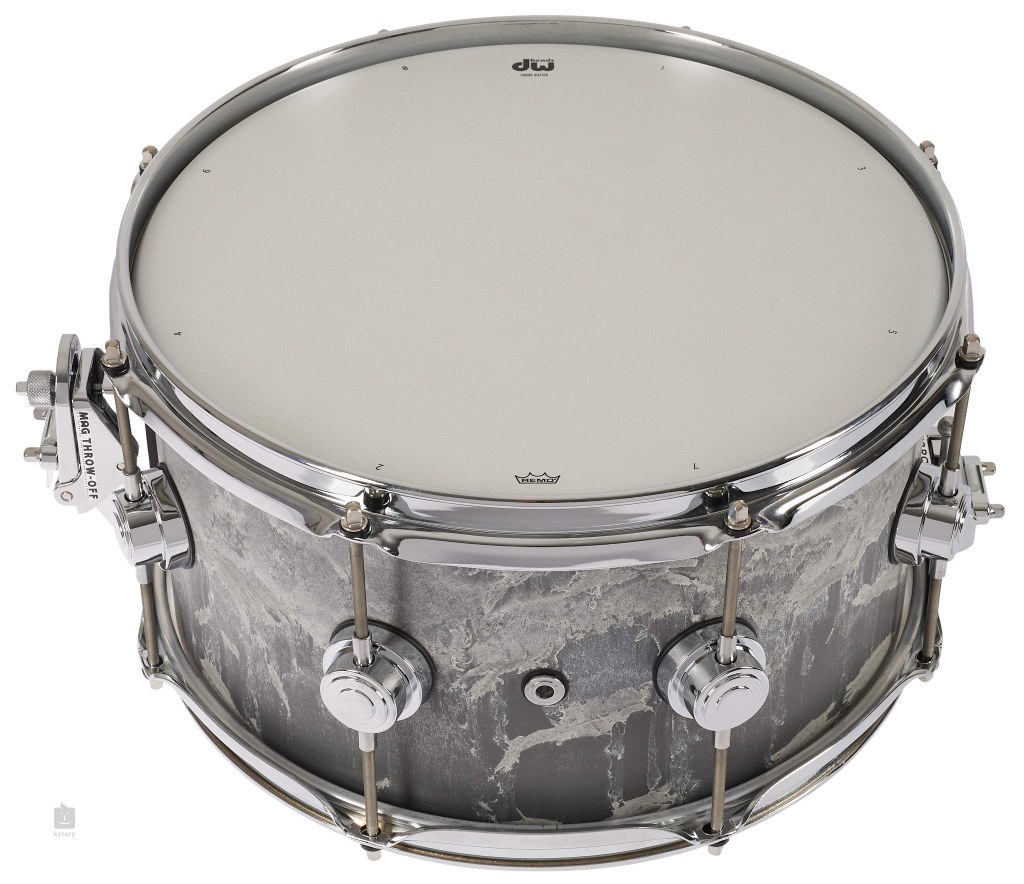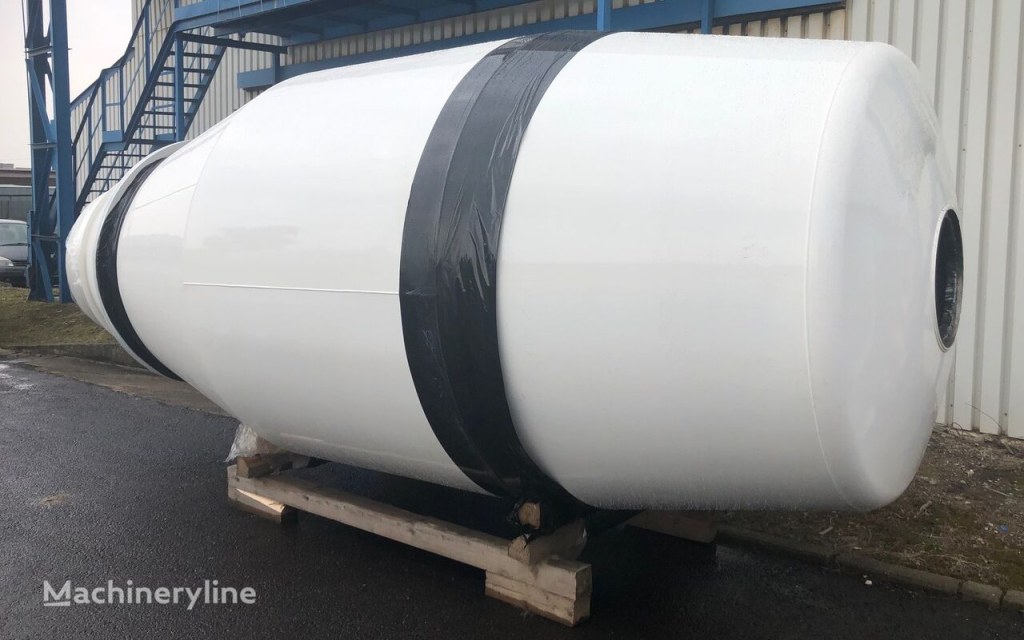The Marvels of the Concrete Drum: A Revolutionary Invention in the World of Music
Introduction
Dear Music Enthusiast,
Welcome to the world of innovative music instruments! Today, we are going to dive into the mesmerizing world of the concrete drum. This remarkable invention has taken the music industry by storm, captivating both musicians and audiences alike with its unique sound and aesthetic appeal. In this article, we will explore the fascinating history, construction, advantages, and even the disadvantages of the concrete drum. So, sit back, relax, and let us take you on a journey through the evolution of this extraordinary musical instrument.
What is a Concrete Drum?

Image Source: kytary.com
🎵 A concrete drum, also known as a cement drum, is a percussion instrument that belongs to the drum family. It is made entirely of concrete, which gives it a distinctive and powerful sound. The drum consists of a hollow cylindrical body with a drumhead stretched tightly over one or both ends. The concrete drum can produce a wide range of tones and is often used in various musical genres such as rock, jazz, and experimental music.
The History of the Concrete Drum
🎵 The concept of using concrete as a material for musical instruments dates back to ancient times. In ancient Egypt, drums made of clay or stone were used in religious rituals and ceremonies. The idea of creating a drum entirely out of concrete emerged in the early 20th century, during the rise of experimental music and avant-garde art movements. The pioneering percussionist Pierre Schaeffer is credited with inventing the first concrete drum in 1948, revolutionizing the world of music.
The Construction of the Concrete Drum

Image Source: musik-produktiv.com
🎵 The construction of a concrete drum requires meticulous attention to detail and craftsmanship. The drum body is typically made by pouring a mixture of cement, sand, and water into a mold. The mold is then vibrated to remove any air bubbles and ensure a solid and uniform structure. After the concrete has cured, the drumhead is attached to the body using a combination of adhesive and tension rods. The tension rods can be adjusted to tune the drum to the desired pitch, allowing for versatility in sound production.
Who Uses the Concrete Drum?
🎵 The concrete drum has gained popularity among musicians and percussionists worldwide. It is especially favored by experimental and avant-garde musicians who are constantly pushing the boundaries of traditional music. Additionally, the unique visual appeal of the concrete drum makes it a favorite among stage designers and performers who want to create a striking visual impact during live performances.
When and Where Can You Play the Concrete Drum?

Image Source: machineryline.de
🎵 The concrete drum can be played in various settings, from small intimate venues to large concert halls. Its powerful sound projection makes it suitable for both indoor and outdoor performances. The drum is often played as part of an ensemble or as a standalone instrument, depending on the musical composition and the desired effect. Whether you are performing in a rock band, a jazz quartet, or an experimental ensemble, the concrete drum will undoubtedly make a lasting impression on your audience.
Why Choose the Concrete Drum?
🎵 There are several reasons why musicians and percussionists choose the concrete drum over traditional drums made of wood or metal. Firstly, the unique sound of the concrete drum adds a distinctive character to musical compositions. Its deep and resonant tones create a powerful and captivating atmosphere. Additionally, the durability and sturdiness of the concrete drum make it ideal for touring musicians who need a reliable instrument that can withstand rigorous performances. Lastly, the visual aesthetics of the concrete drum make it a statement piece on stage, enhancing the overall visual experience for both performers and the audience.
How to Play the Concrete Drum?
🎵 Playing the concrete drum requires a combination of technique and creativity. The drum can be played using hands, drumsticks, mallets, or brushes, depending on the desired sound and musical style. Different playing techniques such as striking, rolling, or damping can be used to produce a variety of sonic textures and effects. As with any musical instrument, practice and experimentation are key to mastering the art of playing the concrete drum.
Advantages and Disadvantages of the Concrete Drum
Advantages
🌟 1. Unique Sound: The concrete drum offers a one-of-a-kind sound that adds depth and richness to musical compositions.
🌟 2. Durability: The concrete construction ensures that the drum can withstand frequent use and touring.
🌟 3. Visual Appeal: The striking appearance of the concrete drum enhances the overall visual experience on stage.
🌟 4. Versatility: The concrete drum can produce a wide range of tones, making it suitable for various musical genres.
🌟 5. Eco-Friendly: Concrete is a sustainable and environmentally friendly material, making the drum a greener choice compared to traditional drums made of wood or metal.
Disadvantages
⚠️ 1. Weight: The concrete drum is heavier compared to traditional drums, which may pose challenges during transportation.
⚠️ 2. Cost: The process of manufacturing a concrete drum involves specialized craftsmanship, making it more expensive than conventional drums.
⚠️ 3. Limited Availability: The concrete drum is still a niche instrument, and finding a wide variety of options may be challenging.
⚠️ 4. Sound Versatility: While the concrete drum offers a unique sound, it may not be suitable for every musical style or composition.
⚠️ 5. Maintenance: Concrete drums require regular maintenance to ensure the longevity of the drumhead and the overall integrity of the instrument.
Frequently Asked Questions (FAQ)
1. Can the concrete drum be customized with different finishes?
Yes, the concrete drum can be customized with various finishes such as paint, stain, or even decorative elements embedded into the concrete surface. This allows musicians to personalize their instrument and create a visual aesthetic that matches their musical style.
2. Are there different sizes available for the concrete drum?
Yes, the concrete drum comes in various sizes, ranging from small snare drums to large bass drums. The size of the drum affects the tone and sound projection, allowing musicians to choose the appropriate size for their musical needs.
3. Can the concrete drum be used in outdoor performances?
Absolutely! The concrete drum’s robust construction and powerful sound projection make it suitable for outdoor performances. Whether it’s a music festival or a street performance, the concrete drum will make a lasting impression on both musicians and audiences.
4. How do I maintain and care for a concrete drum?
To maintain a concrete drum, it is important to keep the drumhead clean and free from debris. Regularly inspect the tension rods and adjust them if necessary. Additionally, store the drum in a suitable case or bag to protect it from moisture and extreme temperatures.
5. Where can I purchase a concrete drum?
Concrete drums can be purchased from specialty music stores, online retailers, or directly from drum manufacturers. It is recommended to research and compare different options to find the best quality and price that suits your needs.
Conclusion
🎵 In conclusion, the concrete drum has revolutionized the music industry with its unique sound, durability, and striking visual appeal. Whether you are a seasoned drummer or an aspiring musician, incorporating the concrete drum into your musical repertoire will undoubtedly elevate your performances to new heights. Embrace the power and versatility of the concrete drum, and let your creativity soar as you explore new sonic possibilities. Dare to be different, and let the concrete drum unleash your musical potential.
Final Remarks
🎵 Music is an ever-evolving art form, constantly pushing boundaries and challenging conventions. The concrete drum stands as a testament to the limitless creativity and innovation within the world of music. However, it is important to note that like any musical instrument, the concrete drum requires proper care and maintenance to ensure its longevity. Additionally, while the advantages of the concrete drum are numerous, it is essential to consider the potential limitations and drawbacks before making a purchase. Nonetheless, with its unique sound, durability, and visual appeal, the concrete drum continues to captivate musicians and audiences alike, leaving an indelible mark on the world of music.